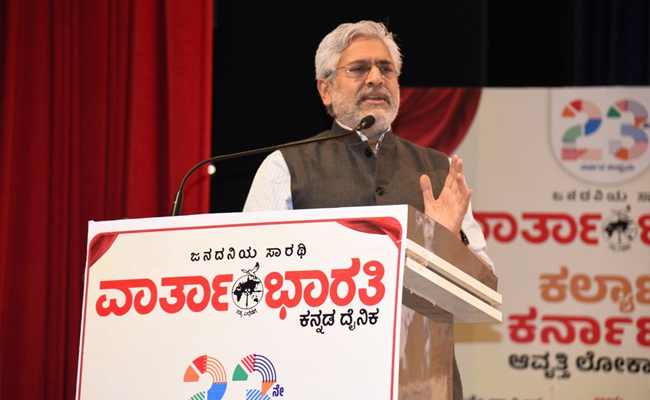Bengaluru (PTI): Defence Minister Rajnath Singh on Wednesday launched the 'iDEX Investor Hub' (iIH), under which more than Rs 200 crores had already been pledged by leading Indian investors.
He also launched the ninth edition of 'Defence India Startup Challenges (DISC 9)' on "Cybersecurity" during the annual defence innovation event 'Manthan' as part of the Aero India 2023 here.
Innovations for Defence Excellence (iDEX) is the flagship initiative of the Department of Defence Production to encourage start-ups and other such entities engaged in defence innovation.
The iDEX Investor Hub' aims to accelerate investment in the Defence sector and give investors a unified view of opportunities and innovations, officials said.
More than Rs 200 crore had already been pledged under iIH by leading Indian investors, an official statement said.
'DISC 9' launched on Wednesday is the first collaboration of iDEX with the Indian Cyber Crime Coordination Centre (i4C) division of the Ministry of Home Affairs. These challenges have been curated from Services, DPSUs, and Ministry of Home Affairs, revealing the deep impact and interest iDEX has generated amongst the Defence industry.
At 'Manthan', Defence Innovation Organisation (DIO) also signed MoUs with leading investors.
DIO has also signed MoUs with ISRO, IN-SPACe (Indian National Space Promotion and Authorisation Centre), and ISpA (Indian Space Association) to further strengthen the Defence Space, the release said, adding that another MoU was signed with the Border Roads Organisation (BRO) to potentially launch start-up challenges in the future.
The fourth edition of Innovate4Defence internship (i4D) was also launched, inviting applications from students all over India, during the event.Singh also released the Indian Army's compendium of '110 Problem Statements' for indigenous defence research, design, development and manufacturing ecosystem.
The 'Problem Statements' highlight Indian Army's technological challenges and requirements in various domains ranging from Armament, Surveillance & Fire Control Systems to niche domains such as Artificial Intelligence, Blockchain, Metaverse, Robotics, Quantum Technology, Cyber, and 'Smartisation' of Ammunition. Further, they also involve induction of new technologies, upgradation of existing systems & indigenisation of critical components.
This Compendium would enable focused efforts towards modernising the Indian Army with indigenous solutions, thereby building a stronger and 'Atmanirbhar Bharat', the release said. Industry and Academia will be hand-held by the Indian Army through various research and development routes including iDEX, Technology Development Fund (TDF) and Army Technology Board (ATB), it was stated.
Let the Truth be known. If you read VB and like VB, please be a VB Supporter and Help us deliver the Truth to one and all.
Srinagar (PTI): Property worth Rs 1 crore belonging to a notorious drug peddler was on Saturday attached in Jammu and Kashmir's Srinagar, police said.
A double-storey house on eight marlas of land situated at Wantpora Eidgah, belonging to Basit Bilal Dar, a notorious drug peddler, valued at approximately Rs 1 crore, a police spokesperson said.
He said Dar is involved in two cases registered under various sections of the NDPS Act.
During investigation, it was established that the accused had acquired the said property through illicit proceeds generated from drug trafficking activities, the spokesperson said.
Consequently, the property was attached under the provisions of the NDPS Act. The attachment proceedings were conducted in the presence of the two independent witnesses, strictly in accordance with the prescribed legal procedures, he said.
As per the attachment order, the owner has been restrained from selling, leasing, transferring, altering, or creating any third-party interest in the property till further orders, the spokesperson added.





